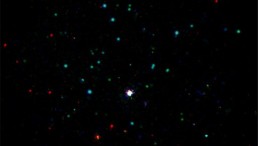A medical breakthrough by researchers from the EPFL Laboratory of Physical and Analytical Electrochemistry showed that exosomes are used by cancer cells to communicate with each other and send information through the bloodstream. This has a great potential for cancer immunotherapy techniques.
"It was a huge surprise, we didn't expect to find so many melanoma cancer cell markers in blood exosomes," explains Hubert Girault, who heads up the Laboratory of Physical and Analytical Electrochemistry at EPFL Valais Wallis. His team discovered this by serendipity and the results have been published in the journal Chem.
Exosomes with a size less than 100 nanometers are microscopic vesicles or spheres that contain data in the form of markers, proteins, and nucleic acids. Exosomes are released by biological cells and communicate from cell to cell.
Melanoma cancer cell exosomes were isolated by EPFL doctoral assistant Yingdi Zhu using cell culture and mass spectrometry. Through this methods, cancer cell markers in exosomes were determined at each melanoma growth stage.
The researchers discovered that there are large quantities of cancer cell markers in the blood exosomes of melanoma patients. Exosomes that the body generates are all collected and transported through the blood. Both healthy and cancer cells produce exosomes. The difference is that cancer cells produce large quantities of exosomes.
"For Professor Girault, the discovery of large quantities of cancer cell markers in blood exosomes raises numerous questions about signaling between cancer cells, which until now were not thought to communicate over longer distances within the body," according to Phys.
The researchers hypothesize that the cancer cells spread because of this intercellular communication. The team also discovered the markers that indicate the stage of development the tumor has. With this information, a simple blood test instead of a biopsy can provide information regarding the presence of a tumor.
"I didn't think it would be possible to use exosomes to detect melanoma incidence so accurately. This breakthrough opens up new possibilities for the use of the cancer immunotherapy technique that I'm currently developing with Professor Girault,'' according to Dr. Ping-Chih Ho of the Ludwig Institute for Cancer Research at UNIL/Department of Oncology UNIL CHUV.














